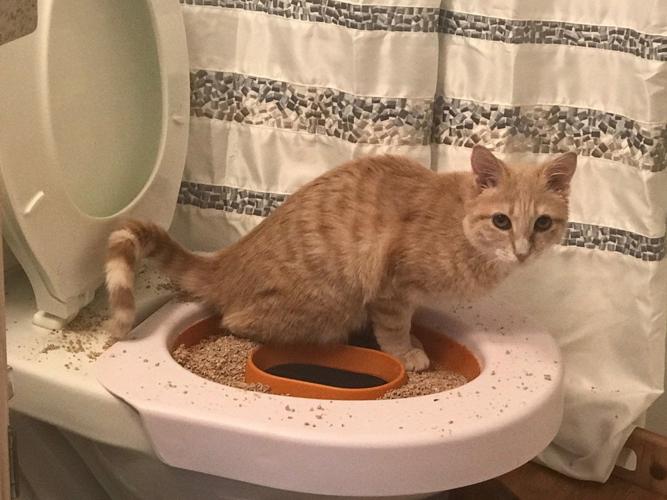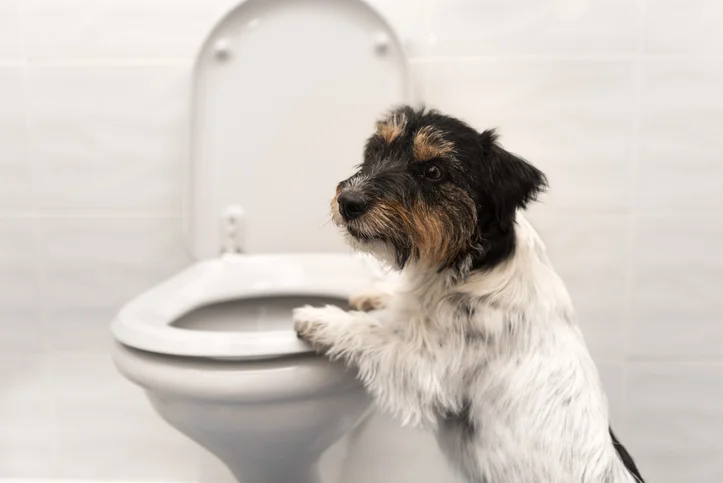They are making a number of great observations on Should you flush animal waste down the toilet in general in the article further down.

When it pertains to throwing away waste, specifically animal waste, many people usually resort to the convenient alternative of flushing it down the toilet. Nonetheless, this relatively easy solution can have severe repercussions for the setting and public health. In this write-up, we'll explore why flushing animal waste down the toilet is a negative idea and provide alternate methods for appropriate disposal.
Intro
Appropriate garbage disposal is important for preserving environmental sustainability and public health. While it may seem harmless to flush animal waste down the commode, it can result in numerous issues, both for the setting and human health.
Risks of flushing pet waste
Environmental effect
Flushing pet waste presents hazardous bacteria and microorganisms right into rivers, which can negatively influence water environments. These virus can pollute water resources and damage aquatic life, disrupting delicate ecosystems.
Public health problems
Animal waste includes hazardous microorganisms such as E. coli and Salmonella, which can present major health and wellness dangers to humans. Flushing pet waste down the commode can infect water supplies, leading to the spread of diseases and infections.
Alternatives to flushing
As opposed to flushing animal waste down the bathroom, there are several different disposal approaches that are much more eco-friendly and sanitary.
Composting
Composting animal waste is an environmentally friendly way to dispose of it. By composting, raw material is broken down right into nutrient-rich dirt, which can be made use of to feed yards and plants.
Land fill disposal
Disposing of pet waste in a landfill is another alternative. While not as environmentally friendly as composting, it is a much website safer option to flushing, as it prevents the contamination of water resources.
Pet dog garbage disposal systems
There are specific pet dog waste disposal systems readily available that safely and hygienically deal with pet waste. These systems usually use enzymes to break down waste and eliminate smells.
Steps to proper animal garbage disposal
To guarantee appropriate disposal of animal waste, adhere to these steps:
Scooping and bagging waste
Routinely scoop and bag pet waste using naturally degradable bags. This stops waste from infecting the setting.
Making use of marked waste bins
Dispose of bagged pet waste in assigned waste containers, such as compost containers or garbage dump containers. Avoid flushing it down the toilet in all expenses.
Cleansing litter boxes and animal areas on a regular basis
Frequently tidy litter boxes and pet areas to stop the build-up of waste and bacteria. Usage pet-safe cleansing items to maintain hygiene.
Benefits of correct disposal approaches
Embracing appropriate disposal methods for pet waste supplies a number of advantages:
Reduced environmental pollution
Correct disposal techniques reduce the risk of environmental pollution, securing rivers and communities from contamination
Minimized danger of water contamination.
By avoiding flushing animal waste down the bathroom, the risk of water contamination is dramatically minimized, guarding public health.
Boosted sanitation and hygiene
Correct disposal methods advertise much better cleanliness and hygiene, creating a safer setting for both humans and animals.
Final thought
To conclude, flushing animal waste down the toilet is harmful to the environment and public health. By embracing alternative disposal approaches and adhering to appropriate waste administration techniques, we can lessen the negative effect of animal waste and contribute to a cleaner, healthier earth.
What To Do With Dog Poo – The Do's And Don'ts Of Disposing Of Faeces
Dog poo bins
Some councils provide dedicated dog waste bins in popular dog-walking areas that can take dog poo that has been bagged but you can legally dispose of dog waste in any public litter bin, as long as it is securely bagged. This also applies to your wheelie bin at home.
Do not flush
Water companies do not recommend flushing dog faeces down the toilet because certain parasites can survive the water processing treatment and are potentially harmful to humans. You should also never consider flushing dog poo that has been bagged down the toilet as the bags will not break down and instead create severe blockages in the sewage system.
In the woods
The Forestry Commission promotes a ‘stick and flick’ method for dealing with waste in the woods. This means finding a stick and using it to flick any poo from off the path so that it is out of the way of other walkers. You could also bury it as long as it is not in an area where there might be livestock.
Livestock
Parasites found in dog poo can be transmitted to livestock if they inadvertently eat infected faeces that has been left on grazing land. This could result in the death of sheep or abortion in cattle so you should always make sure you pick up your dog’s waste in fields where livestock could be present.

Frequently tidy litter boxes and pet areas to stop the build-up of waste and bacteria. Usage pet-safe cleansing items to maintain hygiene.
Benefits of correct disposal approaches
Embracing appropriate disposal methods for pet waste supplies a number of advantages:
Reduced environmental pollution
Correct disposal techniques reduce the risk of environmental pollution, securing rivers and communities from contamination
Minimized danger of water contamination.
By avoiding flushing animal waste down the bathroom, the risk of water contamination is dramatically minimized, guarding public health.
Boosted sanitation and hygiene
Correct disposal methods advertise much better cleanliness and hygiene, creating a safer setting for both humans and animals.
Final thought
To conclude, flushing animal waste down the toilet is harmful to the environment and public health. By embracing alternative disposal approaches and adhering to appropriate waste administration techniques, we can lessen the negative effect of animal waste and contribute to a cleaner, healthier earth.
What To Do With Dog Poo – The Do's And Don'ts Of Disposing Of Faeces
Dog poo bins
Some councils provide dedicated dog waste bins in popular dog-walking areas that can take dog poo that has been bagged but you can legally dispose of dog waste in any public litter bin, as long as it is securely bagged. This also applies to your wheelie bin at home.
Do not flush
Water companies do not recommend flushing dog faeces down the toilet because certain parasites can survive the water processing treatment and are potentially harmful to humans. You should also never consider flushing dog poo that has been bagged down the toilet as the bags will not break down and instead create severe blockages in the sewage system.
In the woods
The Forestry Commission promotes a ‘stick and flick’ method for dealing with waste in the woods. This means finding a stick and using it to flick any poo from off the path so that it is out of the way of other walkers. You could also bury it as long as it is not in an area where there might be livestock.
Livestock
Parasites found in dog poo can be transmitted to livestock if they inadvertently eat infected faeces that has been left on grazing land. This could result in the death of sheep or abortion in cattle so you should always make sure you pick up your dog’s waste in fields where livestock could be present.

As an enthusiastic reader about Can You Flush Dog and Cat Poo Down the Toilet?, I think sharing that information was really useful. I beg you take a moment to share this blog posting if you enjoyed reading it. Thanks a lot for your time spent reading it.
Website